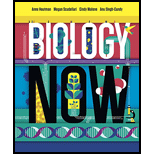
Concept explainers
(a)
To describe:
How many numbers of separate DNA molecules are present at the end of the G0 phase in a cat skin cell?
Introduction:
The cell cycle is an important mechanism used to increase the cell number while maintaining genetic stability of cells. Cell cycle plays a crucial role in growth as well as regeneration. Interphase (G1, S, and G2) and cell division are two important stages occur in the cell cycle. Mitosis (maintains the total number of chromosomes) and meiosis (reduces half the chromosome number) are two kinds of cell divisions occur in eukaryotes.
(b)
To describe:
How many numbers of separate DNA molecules are present at the end of the G1 phase in a cat skin cell?
Introduction:
The cell cycle is an important mechanism used to increase the cell number while maintaining genetic stability of cells. Cell cycle plays a crucial role in growth as well as regeneration. Interphase (G1, S, and G2) and cell division are two important stages occur in the cell cycle. Mitosis (maintains the total number of chromosomes) and meiosis (reduces half the chromosome number) are two kinds of cell divisions occur in eukaryotes.
(c)
To describe:
How many numbers of separate DNA molecules are present at the end of the S phase in a cat skin cell?
Introduction:
The cell cycle is an important mechanism used to increase the cell number while maintaining genetic stability of cells. Cell cycle plays a crucial role in growth as well as regeneration. Interphase (G1, S, and G2) and cell division are two important stages occur in the cell cycle. Mitosis (maintains the total number of chromosomes) and meiosis (reduces half the chromosome number) are two kinds of cell divisions occur in eukaryotes.
(d)
To describe:
How many numbers of separate DNA molecules are present at the end of the G2 phase in a cat skin cell?
Introduction:
The cell cycle is an important mechanism used to increase the cell number while maintaining genetic stability of cells. Cell cycle plays a crucial role in growth as well as regeneration. Interphase (G1, S, and G2) and cell division are two important stages occur in the cell cycle. Mitosis (maintains the total number of chromosomes) and meiosis (reduces half the chromosome number) are two kinds of cell divisions occur in eukaryotes.
Want to see the full answer?
Check out a sample textbook solution
- What symbolic and cultural behaviors are evident in the archaeological record and associated with Neandertals and anatomically modern humans in Europe beginning around 35,000 yBP (during the Upper Paleolithic)?arrow_forwardDescribe three cranial and postcranial features of Neanderthals skeletons that are likely adaptation to the cold climates of Upper Pleistocene Europe and explain how they are adaptations to a cold climate.arrow_forwardBiology Questionarrow_forward
- ✓ Details Draw a protein that is embedded in a membrane (a transmembrane protein), label the lipid bilayer and the protein. Identify the areas of the lipid bilayer that are hydrophobic and hydrophilic. Draw a membrane with two transporters: a proton pump transporter that uses ATP to generate a proton gradient, and a second transporter that moves glucose by secondary active transport (cartoon-like is ok). It will be important to show protons moving in the correct direction, and that the transporter that is powered by secondary active transport is logically related to the proton pump.arrow_forwarddrawing chemical structure of ATP. please draw in and label whats asked. Thank you.arrow_forwardOutline the negative feedback loop that allows us to maintain a healthy water concentration in our blood. You may use diagram if you wisharrow_forward
- Give examples of fat soluble and non-fat soluble hormonesarrow_forwardJust click view full document and register so you can see the whole document. how do i access this. following from the previous question; https://www.bartleby.com/questions-and-answers/hi-hi-with-this-unit-assessment-psy4406-tp4-report-assessment-material-case-stydu-ms-alecia-moore.-o/5e09906a-5101-4297-a8f7-49449b0bb5a7. on Google this image comes up and i have signed/ payed for the service and unable to access the full document. are you able to copy and past to this response. please see the screenshot from google page. unfortunality its not allowing me attch the image can you please show me the mathmetic calculation/ workout for the reult sectionarrow_forwardIn tabular form, differentiate between reversible and irreversible cell injury.arrow_forward
 Human Anatomy & Physiology (11th Edition)BiologyISBN:9780134580999Author:Elaine N. Marieb, Katja N. HoehnPublisher:PEARSON
Human Anatomy & Physiology (11th Edition)BiologyISBN:9780134580999Author:Elaine N. Marieb, Katja N. HoehnPublisher:PEARSON Biology 2eBiologyISBN:9781947172517Author:Matthew Douglas, Jung Choi, Mary Ann ClarkPublisher:OpenStax
Biology 2eBiologyISBN:9781947172517Author:Matthew Douglas, Jung Choi, Mary Ann ClarkPublisher:OpenStax Anatomy & PhysiologyBiologyISBN:9781259398629Author:McKinley, Michael P., O'loughlin, Valerie Dean, Bidle, Theresa StouterPublisher:Mcgraw Hill Education,
Anatomy & PhysiologyBiologyISBN:9781259398629Author:McKinley, Michael P., O'loughlin, Valerie Dean, Bidle, Theresa StouterPublisher:Mcgraw Hill Education, Molecular Biology of the Cell (Sixth Edition)BiologyISBN:9780815344322Author:Bruce Alberts, Alexander D. Johnson, Julian Lewis, David Morgan, Martin Raff, Keith Roberts, Peter WalterPublisher:W. W. Norton & Company
Molecular Biology of the Cell (Sixth Edition)BiologyISBN:9780815344322Author:Bruce Alberts, Alexander D. Johnson, Julian Lewis, David Morgan, Martin Raff, Keith Roberts, Peter WalterPublisher:W. W. Norton & Company Laboratory Manual For Human Anatomy & PhysiologyBiologyISBN:9781260159363Author:Martin, Terry R., Prentice-craver, CynthiaPublisher:McGraw-Hill Publishing Co.
Laboratory Manual For Human Anatomy & PhysiologyBiologyISBN:9781260159363Author:Martin, Terry R., Prentice-craver, CynthiaPublisher:McGraw-Hill Publishing Co. Inquiry Into Life (16th Edition)BiologyISBN:9781260231700Author:Sylvia S. Mader, Michael WindelspechtPublisher:McGraw Hill Education
Inquiry Into Life (16th Edition)BiologyISBN:9781260231700Author:Sylvia S. Mader, Michael WindelspechtPublisher:McGraw Hill Education





